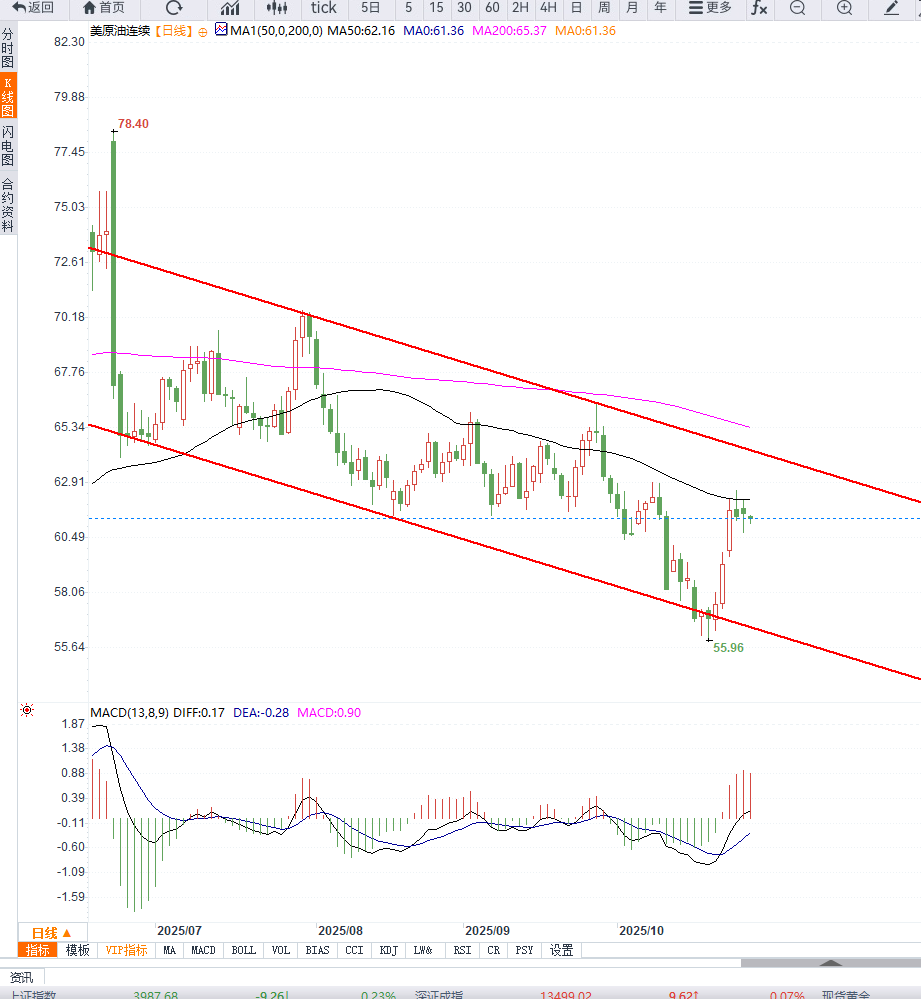Crude oil trading reminder: Under the dual pressure of OPEC production increase expectations and trade uncertainty, oil prices remain high and volatile
2025-10-28 10:04:28
OPEC+ members are discussing a modest production increase in December. Four sources close to the negotiations revealed that the group is gradually restoring production capacity after years of production cuts. Since April of this year, OPEC+ has gradually relaxed some of its production cuts to respond to the rebound in global energy demand.
"Traders are assessing the progress of trade talks and the supply outlook, with a potential increase in OPEC production providing significant headwind for oil prices," ANZ said in a note.

Supporting the market is also the optimistic expectation of reaching a consensus in trade negotiations. However, sanctions against Russia have further amplified market uncertainty. Last week, the Trump administration announced a new round of sanctions against major Russian energy companies.
For the first time in his second term, he took direct restrictive measures on Russian energy exports, targeting Lukoil PJSC and Rosneft PJSC, which together account for nearly half of Russia's crude oil exports.
Against this backdrop, Lukoil announced on Monday that it would sell all of its international assets, becoming the most representative divestment move by Russian companies under the pressure of sanctions.
Energy analyst Matthew Crane noted: "The U.S. sanctions surprised the market, but even if some Russian supply is restricted, global inventory pressures remain. Investors are worried that OPEC+ production increases will once again amplify the supply and demand imbalance."
From a technical perspective, WTI crude oil's daily chart shows short-term pressure. Clear support exists around $60 per barrel, while resistance is concentrated around $62.50. If prices remain trapped within this range, they could test support at $59.80 in the short term.
The MACD red column shortened and the RSI fell back to the neutral range, indicating that the upward momentum has temporarily weakened. Near the pressure position, we are waiting for the direction to be chosen after consolidation.

Editor's opinion:
This round of oil price rebound is a balancing act between policy expectations and supply and demand realities in the global energy market. If OPEC+ implements production increases, this will curb oil price upside in the short term, while progress in trade negotiations could become a key variable in the market rebound. Currently, the market's focus is shifting from geopolitical dynamics to the fundamental logic of supply and demand balance.
In the next week, if the OPEC meeting signals a trend towards "increased production + cautious optimism", oil prices may maintain a range-bound fluctuation pattern.
- Risk Warning and Disclaimer
- The market involves risk, and trading may not be suitable for all investors. This article is for reference only and does not constitute personal investment advice, nor does it take into account certain users’ specific investment objectives, financial situation, or other needs. Any investment decisions made based on this information are at your own risk.





















